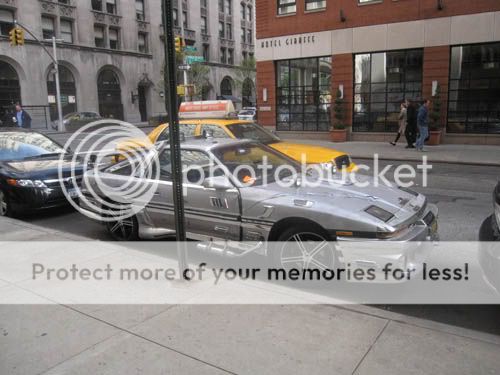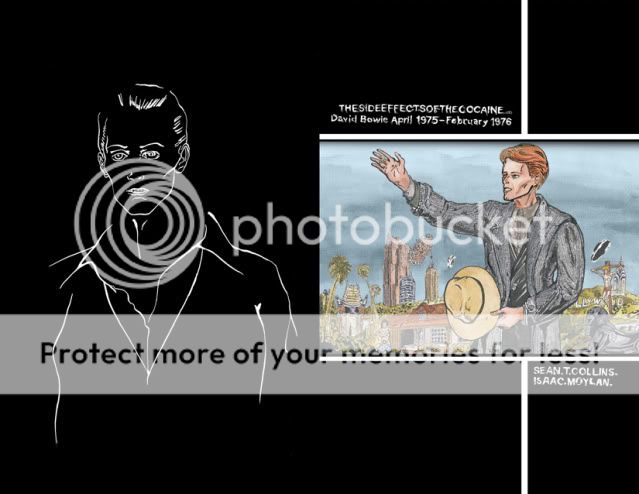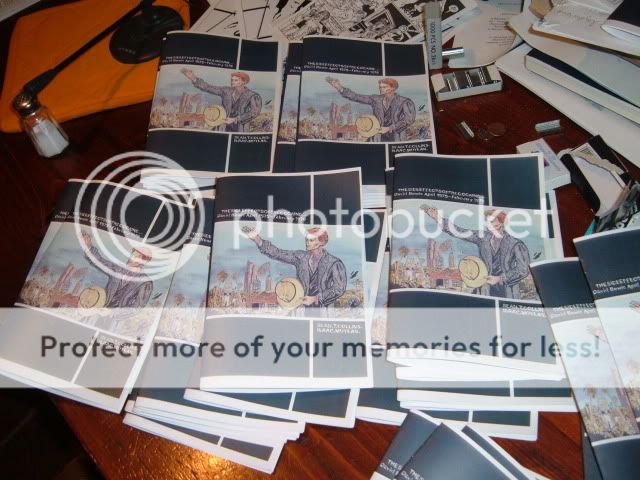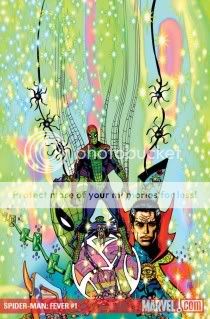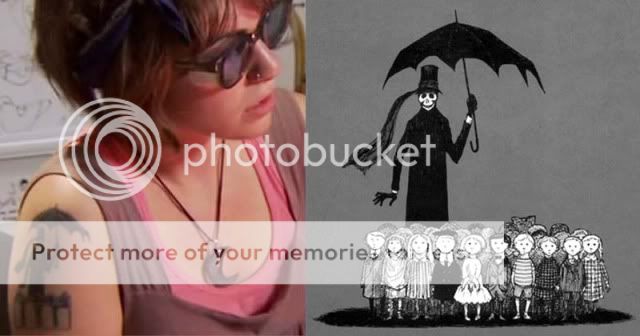* Two big posts on Robot 6 from me today. First, it’s the new batch of MoCCA 2010 sketches in my David Bowie sketchbook!

* And here’s my MoCCA haul!

* Also on the MoCCA beat:
* Tom Spurgeon smacks around that superhero panel featuring Jaime Hernandez, Frank Miller, Dean Haspiel, Paul Pope, and Kyle Baker. I think there were a few problems here: First, you had a few different “one of these things is not like the other” panelists in there, depending on which direction you wanna go in; second of all that’s too many people on a panel for cartoonists of most of their magnitude, all of whom could have easily held down a panel on their own–poor Xaime couldn’t get a word in edgewise; and thirdly, I’d rather hear those particular cartoonists talk about anything but superheroes, and I really like superheroes!
* Rob Clough’s MoCCA con report is indeed as good as Tom says, comprehensive in scope and laser-focused in its observations and recommendations. The show can and should improve.
* Secret Acres was really unhappy with MoCCA this year. Leon and Barry voice a complaint I’ve also heard from a prominent retailer who attended the show: Individual artists have basically been priced out of tables entirely. That shouldn’t happen for all the obvious reasons, but after seeing all the empty space at this year’s show, it seems it also shouldn’t happen for revenue’s sake. The SA guys suggest a sliding scale for table rates, free admission, and a better system for awarding choice locations to earlier purchasers. Plus, they’ve placed an open call for minicomics submissions they can host at their own table next year.
* I’m flat-out amazed by the brutal drubbings Gareb Shamus’s Wizard World comic cons, specifically its Chicago show, are receiving in the local press on the eve of Reed’s rival C2E2 show this weekend — and Wizard’s own Anaheim Comic Con, debuting this weekend as well. I’ve said for a while now that given the stigma attached to Wizard within the industry (especially after the showdown with Reed began), Shamus’s strategy, to the extent one can be discerned, was to first to glom off the positive public awareness of the phrase “Comic Con” (taking a page from Reed’s playbook in fact), and then to take advantage of the credulity and ignorance of local and mainstream coverage of comics to land fluff pieces during all his shows. But it turns out that model couldn’t withstand the very first Wizard/Reed head-to-head match-up. There’s nothing so vapidly fluffy you can’t land it safely into the New York Times‘ comics coverage, so who knows, but that aside, this can’t augur well for the Big Apple/NYCC showdown this fall. (Via Kevin Melrose.)
* Back to Robot 6: This Mark Millar kerfuffle about Marvel ripping off his vampire mutant storyline is the funniest comics story in I don’t know how long. (Marc-Oliver Frisch has his number, methinks.)
* My pal TJ Dietsch’s account of being seduced by Kevin Huizenga’s Ganges, one of the first alternative comics he ever read, is fascinating to me. That’s really strong material and I’d imagine it could have this effect on a lot of people. Also, I’m glad to hear someone else say that the first issue is the least impressive of the three.
* Geoff Johns answers questions about Brightest Day, The Flash, and Green Lantern. I’m looking forward to it all.
* Todd VanDerWerff’s weekly Lost round-up makes me glad I stopped reading Alan Sepinwall’s coverage of the show a few years back when it became apparent he was waiting to not be entertained, and makes me nervous that something I really want to happen isn’t going to happen.
* Rest in peace, Peter Steele. I can’t pretend to have been a huge Type O Negative fan, but the deluxe edition of Bloody Kisses is really something special–gigantic songs drenched in doomed glamour and leavened with just enough tongue-in-cheek humor to let you know Pete and the gang were in on the joke. Just ask Trent Reznor, whose three tweets on Pete’s passing were exactly the kind of eulogy I was looking for. I mean, really–being a goth is funny! Steele got that, even as he got the power of all the sex’n’death’n’outcast stuff that made the lifestyle appealing in the first place. He knew it went hand in hand. That’s why I love “Christian Woman” so much: It’s a nine-minute, three-part epic about a religious woman masturbating to the crucified Jesus Christ on her wall, and they understand that this is both sad and pathetic and loathsome and touching and funny and angry and sexy and creepy all at once. I saw Type O at Ozzfest one year, and they were super-heavy and super-hilarious, ending the set with a joke as memorable as the songs. Godspeed doesn’t seem to be the right word to use, but oh well.

